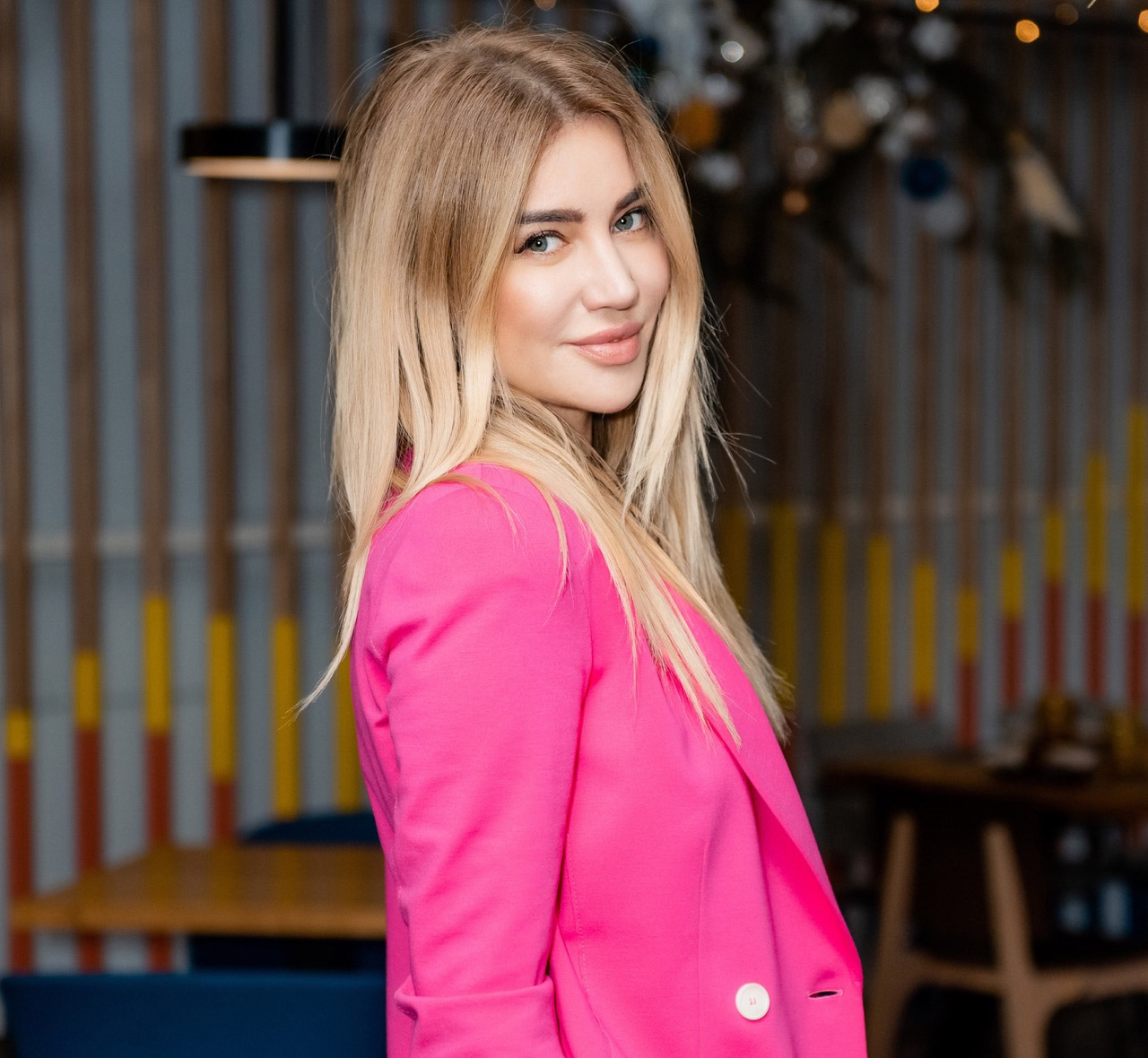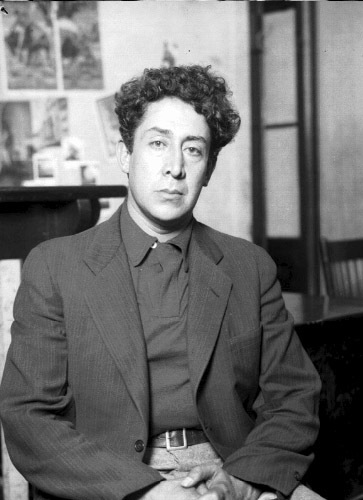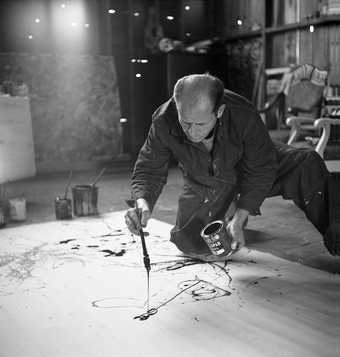Sign up to the FILLIN newsletter
Subscribe to our email newsletter for useful tips and valuable resources, sent out every month
Elena Ksanti: Capturing the Dichotomies of Life Through a Unique Approach
A brief look into the mind of abstract artist Elena Ksanti and her resonating series of works, covering topics of self-exploration, mixed polarities, the mysteries of the unknown, and much more.

Birth of Woman by Elena Ksanti, 2021
Of all the art movements and styles present today, due to its non-objective nature, Abstract Art is one of the more polarizing forms within the field. Debated tirelessly amongst admirers, some find such creations uniquely idiosyncratic while others harbor the opinion: “Is this really ‘art’?” —“I could do that!”—or “I don’t get it.” Though on differing ends, all perspectives are valid in that the goal of such works are to generate intrigue and provoke thought and conversation rather than instant apprehension.
As humanity grapples with a myriad of battles, creatives like abstract artist Elena Ksanti use their talents as a mirror of reflection, touching on the wars that often reside within us all.
As humanity grapples with a myriad of battles, creatives like abstract artist Elena Ksanti use their talents as a mirror of reflection, touching on the wars that often reside within us all.

Elena Ksanti
Abstract Art
The rise of abstract art commenced around the late 19th century begetting a radical change to the techniques of the time. However, one could argue that abstractionism dates back even further to the Paleolithic period with the cave paintings of early humans and the Japanese marbling technique, Suminagashi, of the the 10th century.
Expressing a rejection of the constraints of Realism, many abstract artists took on the medium of abstraction to uniquely explore the prisms of their imaginations. With such freedoms, an innate desire occurs, showcasing spontaneity and creativity. Throughout the years, countless artists, theorists, historians, and analysts have expressed differing views of Abstract art. And in like manner, numerous forms and approaches were born and adopted by talented artists and creatives from around the globe. Of said forms is the technique of Fluid Art.
Expressing a rejection of the constraints of Realism, many abstract artists took on the medium of abstraction to uniquely explore the prisms of their imaginations. With such freedoms, an innate desire occurs, showcasing spontaneity and creativity. Throughout the years, countless artists, theorists, historians, and analysts have expressed differing views of Abstract art. And in like manner, numerous forms and approaches were born and adopted by talented artists and creatives from around the globe. Of said forms is the technique of Fluid Art.
Fluid Abstraction
Fluid Art, also known as flow art, liquid art, or acrylic paint pouring, is an abstract painting technique utilizing fluid mediums, such as free-flowing acrylics, powdered pigments, or inks, to produce introspective works of art.
Although the technique of Fluid Art has gained recognition and popularity in recent years, the history of this particular method dates back to the early 1930s, with Mexican painter David Alfaro Siqueiros. Famously known as a member of the "Mexican Muralists” — a historic art project and collective, Siqueiros stumbled upon this unexpected painting technique by unsystematically pouring differing color flows onto the surface of wooden panels and canvases. The effects of this approach allowed the various colors to spread, coalesce and penetrate one another. Captivated by the aesthetics and dynamic processes between the colorful hues, D.A. Siqueiros discovered he could form incomparable and individualistic images.
Although the technique of Fluid Art has gained recognition and popularity in recent years, the history of this particular method dates back to the early 1930s, with Mexican painter David Alfaro Siqueiros. Famously known as a member of the "Mexican Muralists” — a historic art project and collective, Siqueiros stumbled upon this unexpected painting technique by unsystematically pouring differing color flows onto the surface of wooden panels and canvases. The effects of this approach allowed the various colors to spread, coalesce and penetrate one another. Captivated by the aesthetics and dynamic processes between the colorful hues, D.A. Siqueiros discovered he could form incomparable and individualistic images.

David Alfaro Siqueiros
Mexican Painter David Alfaro Siqueiros
Abstract artist Jackson Pollock
The artist later underwent extensive research to define the physical process of color fusion in terms of Fluid Dynamics. Siqueiros called the newly discovered technique "accidental painting" due to its spontaneous arrangement and nature.
Building off the method of Siqueiros' "accidental painting,” renowned American Artist and representative of Abstract Expressionism, Jackson Pollock created a similar approach. Much like Siqueiros, Pollock developed his signature styles of the "drip technique" and "action painting," trickling paints onto canvas to convey emotion in movement. Such motion during the creative process acted as an intimate dialog between the creator and the canvas. According to Pollock, actions of the hands and the choice of colors reflect ones inner self and translate profound psychological expressions onto the given surface.
Pollock's conception, Siquerios' attention to the technical aspects of fluid painting, and many other prominent pioneers of abstract art have touched the lives of countless artists of today, acting as inspiration for their future works. One of these emerging artists is Elena Ksanti and her artworks of Fluid Abstraction.
Building off the method of Siqueiros' "accidental painting,” renowned American Artist and representative of Abstract Expressionism, Jackson Pollock created a similar approach. Much like Siqueiros, Pollock developed his signature styles of the "drip technique" and "action painting," trickling paints onto canvas to convey emotion in movement. Such motion during the creative process acted as an intimate dialog between the creator and the canvas. According to Pollock, actions of the hands and the choice of colors reflect ones inner self and translate profound psychological expressions onto the given surface.
Pollock's conception, Siquerios' attention to the technical aspects of fluid painting, and many other prominent pioneers of abstract art have touched the lives of countless artists of today, acting as inspiration for their future works. One of these emerging artists is Elena Ksanti and her artworks of Fluid Abstraction.

Jackson Pollock
Artist Elena Ksanti

Abstract Artist Elena Ksanti
As humanity grapples with a myriad of battles spanning feuding countries, global epidemics, natural cataclysms, and growing ecological concerns, creatives like abstract artist Elena Ksanti use their talents as a mirror of reflection, touching on the wars that often reside within us all. Abstract Artist Elena Ksanti.
Elena Ksanti is a contemporary artist who ventured into the world of art at the early age of six, progressively growing her passion for creation. After preparatory school, Ksanti graduated from the famed Arts & Design institution, Central Saint Martins College, in London, England, and later continued her educational journey in the United States, graduating from the University of Illinois. Practicing multiple disciplines, Ksanti eventually honed her artistic prowess within the technique of fluid abstraction, expressing her many sentiments and emotions onto canvas through various forms, designs, colors, and shapes.
Elena Ksanti is a contemporary artist who ventured into the world of art at the early age of six, progressively growing her passion for creation. After preparatory school, Ksanti graduated from the famed Arts & Design institution, Central Saint Martins College, in London, England, and later continued her educational journey in the United States, graduating from the University of Illinois. Practicing multiple disciplines, Ksanti eventually honed her artistic prowess within the technique of fluid abstraction, expressing her many sentiments and emotions onto canvas through various forms, designs, colors, and shapes.
Left: World of Mystery, Elena Ksanti (2019)
Center: Get Over The Pain, Elena Ksanti (2021)
Right: Birth of Birds, Elena Ksanti (2019)
Though the artist has constructed countless personal and private artworks throughout her career, after spending the last fifteen years in deep introspection and meditation, abstractionist Elena Ksanti compiled a never before seen collection of 28 fluid art pieces for public consumption and interpretation back in 2019.
In her artist statement, Elena spoke candidly, expressing:
“My view of art is simple in its nature: allow the artwork to speak, acting as a mirror to the soul and our inner consciousness [...] My hope is that my creations speak to the human condition, resonating with the memories we've retained, long since forgotten, or have yet to experience.”
Parallel Worlds (2019) by Abstract artist Elena Ksanti made its debut in sunny California in the Westwood section of Los Angles. Since its inauguration, the series of works have traveled the globe, exhibiting in both group and solo expositions in various destinations like Madrid, Spain; Dohа, Qatar; Puglia, Italy; New York, USA, and many more.
The inspiration behind Parallel Worlds derived from the philosophical concept of Yin and Yang, wherein she intended to depict the multifaceted dichotomies of life. To do so, she cultivates various paints and colors, predominantly mixing such materials to achieve a specific hue or shade, allowing the selected paint combinations to fall naturally onto the canvas—thus, exemplifying resonating messages embedded in each piece. This particular pouring technique took years to master, as the artist studied and dissected the physical aspects of color fusion, understanding the importance of paint viscosity and weights.
“...(Parallel Worlds) presents a world of inseparable and contradictory opposites and competing and complementary forces. In my series, I found myself inspired by the ancient Chinese philosophy of YinYang, depicting elements and pairs like fight and flight, female and male, dark and light, heaven and hell —so on and so forth. Thus, bringing these sentiments within my artworks for individual resonance and interpretation.”
According to Ksanti, she refuses to create from an involuntary place (unless themes conveying “forcefulness,” for example, is the intent). As she describes it, her approach to creation is reminiscent of a volcano in that her creative process lies fixed in periods of extended meditation followed by spontaneous moments of prompt execution and impulse.
While all her artworks have an underlying message, Ksanti values the observer's unique outlook on her work. Even if ruminations developed are counter to the artwork's original essence, she welcomes the power of individual resonance that allows any and all interpretations to be valid and true. Her objective is simple: to depict the harmonious dance of life, marrying imagination, emotion, and a sense of connection with the fleeting moments we've all encountered in this short existence on Earth. Poetically put— "extracting the endless out of the end."
So what's next for the artist? As her series continues on in its travels, artist Elena Ksanti is garnering inspiration for her subsequent collection to come. She proclaims that if humanity understands themselves by reverting within, their actions will undoubtedly alter, resulting in the progression of our global society. She ponders: how can we as a community convey love if we do not first uncover and understand love within ourselves? How do we overcome fear unless we face said fear that lie within? Is it possible to admire the planet and all of Earth's inhabitants if we block our vision to such admiration?
These are the question abstract artist Elena Ksanti dares to address in her works of art, betting a change that lies beyond the mere canvas itself.
In her artist statement, Elena spoke candidly, expressing:
“My view of art is simple in its nature: allow the artwork to speak, acting as a mirror to the soul and our inner consciousness [...] My hope is that my creations speak to the human condition, resonating with the memories we've retained, long since forgotten, or have yet to experience.”
Parallel Worlds (2019) by Abstract artist Elena Ksanti made its debut in sunny California in the Westwood section of Los Angles. Since its inauguration, the series of works have traveled the globe, exhibiting in both group and solo expositions in various destinations like Madrid, Spain; Dohа, Qatar; Puglia, Italy; New York, USA, and many more.
The inspiration behind Parallel Worlds derived from the philosophical concept of Yin and Yang, wherein she intended to depict the multifaceted dichotomies of life. To do so, she cultivates various paints and colors, predominantly mixing such materials to achieve a specific hue or shade, allowing the selected paint combinations to fall naturally onto the canvas—thus, exemplifying resonating messages embedded in each piece. This particular pouring technique took years to master, as the artist studied and dissected the physical aspects of color fusion, understanding the importance of paint viscosity and weights.
“...(Parallel Worlds) presents a world of inseparable and contradictory opposites and competing and complementary forces. In my series, I found myself inspired by the ancient Chinese philosophy of YinYang, depicting elements and pairs like fight and flight, female and male, dark and light, heaven and hell —so on and so forth. Thus, bringing these sentiments within my artworks for individual resonance and interpretation.”
According to Ksanti, she refuses to create from an involuntary place (unless themes conveying “forcefulness,” for example, is the intent). As she describes it, her approach to creation is reminiscent of a volcano in that her creative process lies fixed in periods of extended meditation followed by spontaneous moments of prompt execution and impulse.
While all her artworks have an underlying message, Ksanti values the observer's unique outlook on her work. Even if ruminations developed are counter to the artwork's original essence, she welcomes the power of individual resonance that allows any and all interpretations to be valid and true. Her objective is simple: to depict the harmonious dance of life, marrying imagination, emotion, and a sense of connection with the fleeting moments we've all encountered in this short existence on Earth. Poetically put— "extracting the endless out of the end."
So what's next for the artist? As her series continues on in its travels, artist Elena Ksanti is garnering inspiration for her subsequent collection to come. She proclaims that if humanity understands themselves by reverting within, their actions will undoubtedly alter, resulting in the progression of our global society. She ponders: how can we as a community convey love if we do not first uncover and understand love within ourselves? How do we overcome fear unless we face said fear that lie within? Is it possible to admire the planet and all of Earth's inhabitants if we block our vision to such admiration?
These are the question abstract artist Elena Ksanti dares to address in her works of art, betting a change that lies beyond the mere canvas itself.
Material and photos are provided by the press office of Elena Ksanti at FprBuro Communications Agency

FprBuro Communications Agency



